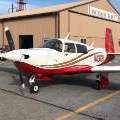Bonanza breakup video analysis, how does it affect Mooney?
-
Members Online
- turbofan
- gacoon
- 1980Mooney
- ohdub
- affricate
- MBDiagMan
- Rwsavory
- Smiles201
- wombat
- A64Pilot
- spistora
- FlyingDude
- gevertex
- 201Steve
- Glen S.
- sandeepdutta
- Dick Denenny
- ttflyer
- Kerrville
- 65MooneyPilot
- Lois
- Jose Jo
- Paul Thomas
- NickG
- Scott Ashton
- 00-Negative
- Igor_U
- BlueSky247
- Guy123
- dkkim73
- M Terry
- hammdo
- Marc_B
- Will.iam
- AJ88V
- Jsno
- PeterRus


Recommended Posts
Join the conversation
You can post now and register later. If you have an account, sign in now to post with your account.